Psoriasis is a chronic skin condition characterized by flares and periods of relative remission. It causes patients' skin red, patches of thick, dry, and cracked. Psoriatic rashes are large, and they cause significant mental distress.[1]
What is even worse is that doctors still poorly understand psoriasis. They do not know what exactly causes this disease. Consequently, treating is challenging.
In psoriasis, the skin's immune system becomes overactive. This poses skin inflammation and causes skin cells to grow too quickly. This causes scaly and inflamed skin. Rashes mainly occur on a visible part of the body. Hence, it is a significant aesthetic problem.
Medical science understands that it probably results from genetics and certain environmental factors. Though there are many psoriasis treatments, some people do not benefit from just any kind of treatment.
Living with skin rashes that would not respond to various treatments is distressing. In severe cases, doctors may even prescribe drugs that suppress immunity. However, these medications cause many side effects.
Fortunately, some of the non-pharmacological treatments may help manage psoriasis, and red light therapy is one such option. It may help soothe skin and prevent frequent flare-ups, thus providing much-needed relief.

How Does Red Light Therapy Work in Psoriasis?
There are many kinds of light therapies using different light frequencies. Red light therapy uses low light frequency. It uses non-thermal LED light. Thus, it mainly works through photobiomodulation (PBM) and not heat. Another name for such therapy is low-level light therapy (LLLT).[2]
So, how does it work?
It appears that lights of specific frequencies can modulate the working of cells and tissues. Thus, low-frequency light can penetrate deep inside the tissues, promoting tissue regeneration and lowering inflammation.
This means that red light therapy helps lower unusual growth of skin cells in psoriasis. It also helps reduce rashes by helping overcome inflammation. Even more, once the inflammation and overactivity of skin cells has subsided, it promotes regeneration of healthy skin cells.[2]
It appears that photobiomodulation using red light therapy mainly works by influencing immune cells. Thus, red light therapy may affect mast cells, neutrophils, and macrophages in the skin. It helps normalize the activity of these overactive immune cells.
Since red light therapy does not provide heat, it does not cause any skin damage. It appears that its effects are related to the ability of the specific light frequency to modulate cellular functions.
Red light therapy is effective and yet very mild. It means that even its prolonged use would not cause any side effects. Yet, its regular use can make a significant difference to skin health. It not only helps heal the skin but also makes the skin feel pleasant. It enhances skin appearance and elasticity. Due to its ability to boost collagen production may even help prevent skin aging and wrinkles formation.

Red Light Therapy & Psoriasis
People living with psoriasis need something fit for regular use. Something that may help prevent psoriasis flares. Red light therapy is good not only for suppressing skin rashes but also for preventing them.
It means that one can regularly use red light therapy to prevent skin flares. It is even beneficial during periods of remission. During these periods, it rejuvenates skin and modulates various biological processes, ensuring a person stays psoriasis-free for long.
It is vital to understand that science shows that both blue and red lights are suitable for psoriatic skin. Even visible light is good for preventing psoriasis, skin soothing, and suppressing flares.
However, there are reasons for preferring red light therapy over visible light for preventing psoriasis. Red light therapy devices provide low-frequency light that is much brighter or has much more energy than visible light, and yet it does not carry heat. Hence, red light therapy is much more effective than visible light. It is safer and yet more effective.
Similarly, the use of blue light is common. Blue light or UV light is also as good as red light therapy.[3] However, it is no secret that UV rays are not good for the skin. UV rays cause skin aging and damage DNA. However, red light therapy is very different, a much safer option.
Thus, it would be correct to say that although science shows that different kinds of light therapy may benefit people with psoriasis, red light therapy is the best.
Now, consider the fact that medications do not fully cure psoriasis. Hence, people need to use light therapy regularly. Therefore, safety is of prime importance, and this is where red light therapy outshines other kinds of light therapies. It is among the safest of all light therapy options.[2]
Finally, there is one more benefit of red light therapy in psoriasis that no one is talking about. Unlike visible, blue, or UV light, red light penetrates deep inside the skin. This means that red light therapy is significantly better for chronic and thicker psoriatic lesions or skin rashes.[4]
This also means that red light therapy is not just good for preventing psoriasis flares but also good when experiencing significant flares. All these benefits come at almost no known risk for health. Even more, red light therapy has a skin rejuvenating and anti-aging effect.

The Bottom Line
Red light therapy is among the safest options for preventing psoriasis flares. What is incredible about this therapy is that it is safe to use along with other treatment methods. One can use it with ointments and medications. It does not cause any side effects.
It also has a unique place among different kinds of light therapies. Red light therapy is not just good for preventing flares. It can penetrate deep inside skin rashes and thus promote skin healing. Other light therapies work superficially, while red light therapy has an excellent penetrating ability.
Unlike visible light or UV rays, it neither damages skin cells nor has an aging effect on the skin. On the contrary, It modulates different biological processes and thus has prolonged benefits, especially on regular use.
References
[1] Branch NSC and O. Psoriasis [Internet]. National Institute of Arthritis and Musculoskeletal and Skin Diseases. NIAMS; 2017 [cited 2023 Nov 3]. Available from: https://www.niams.nih.gov/health-topics/psoriasis.
[2] Wunsch A, Matuschka K. A Controlled Trial to Determine the Efficacy of Red and Near-Infrared Light Treatment in Patient Satisfaction, Reduction of Fine Lines, Wrinkles, Skin Roughness, and Intradermal Collagen Density Increase. Photomed Laser Surg. 2014;32:93–100.
[3] Kleinpenning MM, Otero ME, van Erp PEJ, et al. Efficacy of blue light vs. red light in the treatment of psoriasis: a double-blind, randomized comparative study. J Eur Acad Dermatol Venereol. 2012;26:219–225.
[4] Tandon YK, Yang MF, Baron ED. Role of photodynamic therapy in psoriasis: a brief review. Photodermatology, Photoimmunology & Photomedicine. 2008;24:222–230.












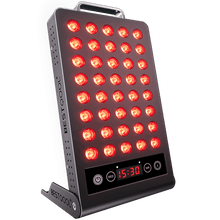
 Small
Small
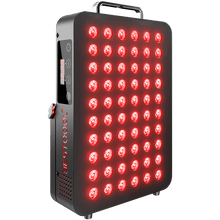
 Moderate
Moderate
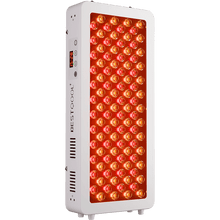
 Moderate
Moderate
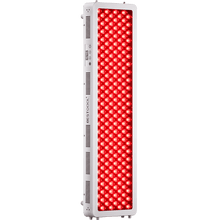
 Moderate
Moderate
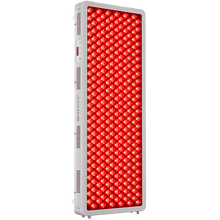
 Full
Full



